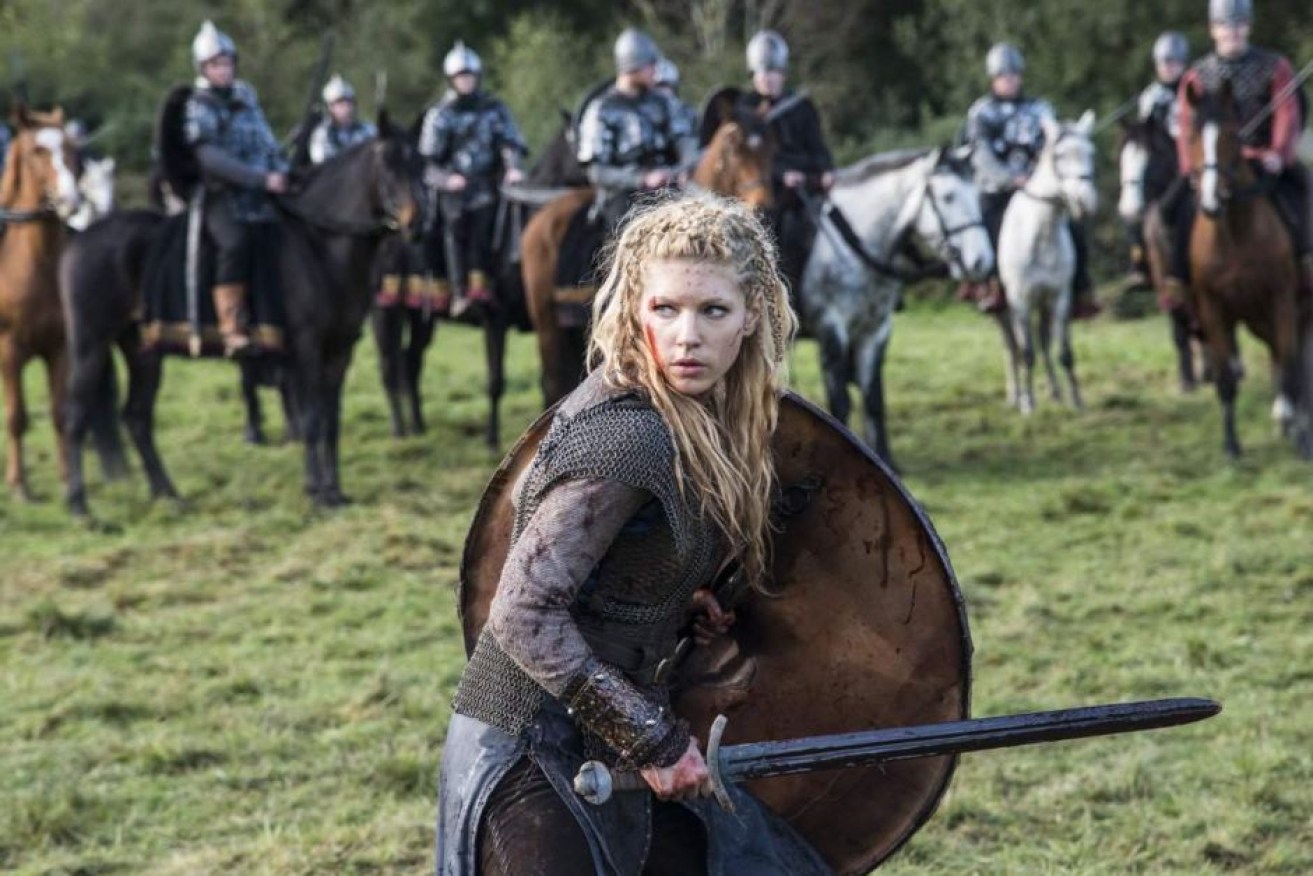That female Viking warrior might not be female … or a warrior

Female Viking warriors. Awesome on TV. Not so great in academic research. Photo: The History Channel
Doubts have been cast on new research that claimed an ancient Viking warrior buried in Sweden was actually a woman – or even a warrior.
The story sprang up all over the internet after the research was published in the American Journal of Physical Anthropology.
So were Vikings more progressive than first thought?
Let’s break it down.
The original research relied on DNA tests on bones
Researchers conducted tests on a Viking buried in a “well-furnished grave” found in the Swedish town of Birka in the 19th century.
Inside the grave were swords, an axe, a spear, armour-piercing arrows, two shields and two horses.
“The complete equipment of a professional warrior,” the journal said.
“Furthermore, a full set of gaming pieces indicates knowledge of tactics and strategy stressing the buried individual’s role as a high-ranking officer.”
Researchers said that based on “material and historical” records, it had simply been assumed that the warrior was male.
They ran a DNA test to confirm the sex of the warrior inside the grave, and found a “lack of a Y-chromosome”.
“The identification of a female Viking warrior provides a unique insight into the Viking society, social constructions, and exceptions to the norm in the Viking time-period,” the journal article read.
“The results call for caution against generalizations regarding social orders in past societies.”
So, Vikings were super progressive and allowed boss lady-warriors to run their armies, right?
Maybe not.
A Viking expert has some big issues with the research
Judith Jesch, a Professor of Viking Studies, wrote a comprehensive blog post poking all sorts of holes in the original research.
She noted that:
- There are doubts about the origins of the bones because they were excavated in the 19th century
- Her own analysis raises doubts over whether the grave actually belonged to a “high-ranking” officer
- There were no injuries observed on the skeleton, so there are questions over whether it belonged to a warrior at all
- Researchers didn’t pursue alternative explanations
“These are some of my caveats which I would dearly love people to take into account before tweeting all over the world about women warriors in the Viking Age,” Professor Jesch wrote.
She said she believes the “fascination with women warriors” is “heavily, probably too heavily, influenced by 20th- and 21st-century desires”.
Her final thought?
“It’s too easy to take the title of an article at face value and send it round the Twittersphere without further thought.”






